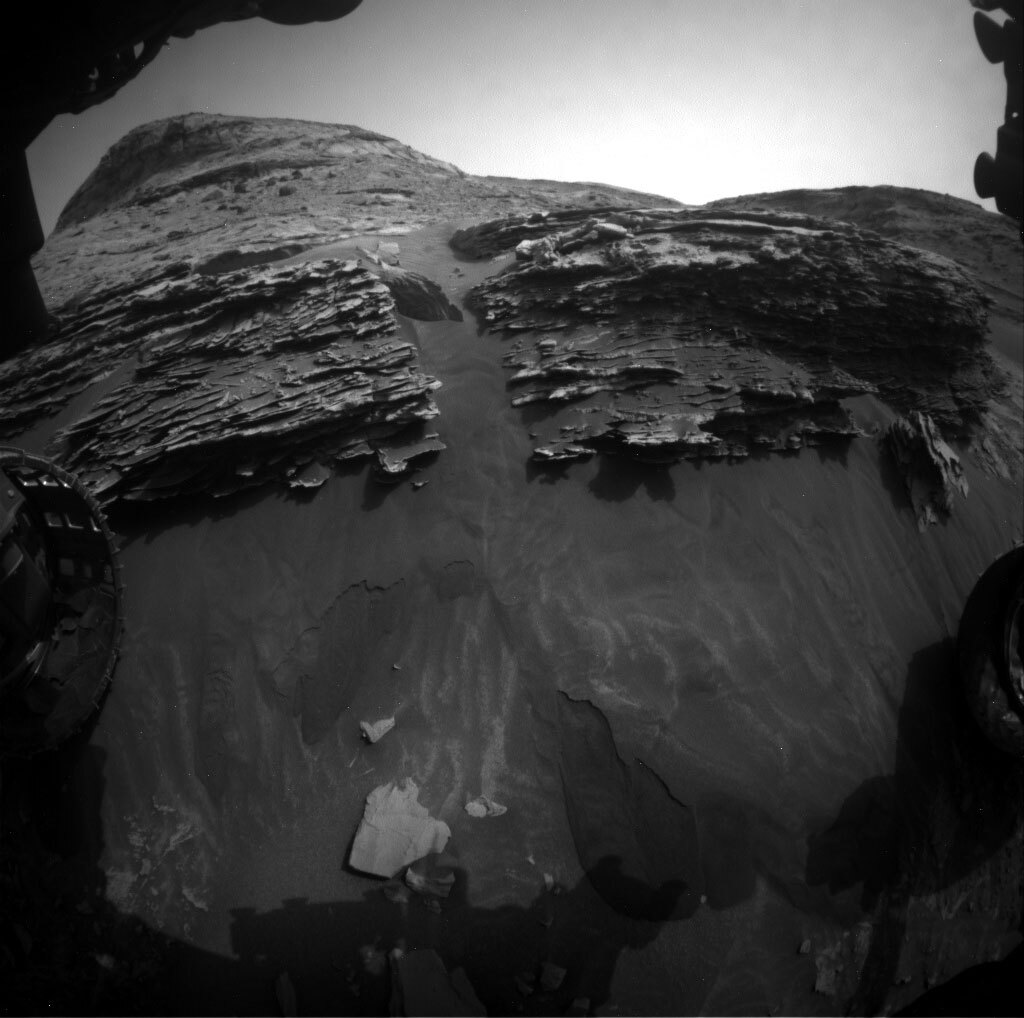2 min read

The "bump" planned on Sol 3354 to move the rover closer to "The Prow" outcrop was successful, placing the front wheels very close to the base of the outcrop. From this new position, the arm can reach the top of the outcrop, so APXS will be placed on a couple of upper outcrop targets named "Angasima" and "Kamuda" on Sol 3355. Unfortunately, MAHLI had an issue reading data from their memory a couple sols ago, so MAHLI imaging is precluded while engineers take a closer look at MAHLI. Instead, the Right Mastcam will image the APXS target to allow the chemical measurement to be placed in geologic context. ChemCam will also sample the elemental chemistry of the outcrop at "Cerro la Luna" and use its RMI to acquire a high-resolution 5x2 mosaic of a bedrock exposure called "Paso de las Lagrimas." Mastcam is also planning a stereo mosaic of the outcrop and will acquire mosaics of the next drive target and the Mirador butte toward the south. Navcam and Mastcam will be used to characterize the amount of dust in the atmosphere, which has increased lately, and Navcam will search for dust devils.
Before dawn on Sol 3356, Navcam will search for clouds. Later that morning, Navcam will again look at the content of dust in the atmosphere and search for dust devils, then watch for clouds just above the horizon. Then ChemCam will fire its laser at the "Quebrada de Jaspe" target on the right side of the outcrop and acquire an RMI mosaic of another bedrock target dubbed "Vale dos Cristais." The Right Mastcam will then document both of the ChemCam targets and the APXS targets. Mastcam will then take two stereo mosaics, extending coverage of The Prow, and Navcam will again look for clouds above the horizon. The rover will then pack up and drive toward the east, stopping along the way to image interesting outcrops using Navcam and Mastcam. After the drive and the usual post-drive imaging, MARDI will take another twilight image. Overall, a busy plan, which make for an interesting and sometimes hectic day for me as SOWG Chair!
Written by Ken Herkenhoff, Planetary Geologist at USGS Astrogeology Science Center







